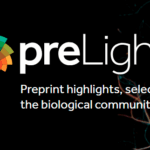By Lilian Nassi-Calò

Photo: Silke Remmery.
Historically, the relationship between the press and scientists has proved difficult, stormy, and often lacks mutual trust. Nevertheless, both need each other: researchers need to communicate their findings to the public, and do so through journalists; on the other hand, the media benefits from the publication of science news, which attract the readers’ attention.
In this sense, the UK based non-profit initiative Sense About Science organized a series of workshops named Voice of Young Science, whose goal is to foster contact between young researchers and science journalists. The workshops encourage researchers to speak to the lay public about their findings and answer media questions about science topics.
Many scientists admit that dealing with complex issues related to their research with journalists is not an easy task. There is the risk of oversimplification or using specialized technical language and jargons whose meaning is unknown to most. An alternative found by some researchers was to eliminate the middlemen – journalists – and dialogue directly with the public. Magazines such as Scientific American – with versions in several languages, including Portuguese, and science pages of major newspapers in many countries have been doing it for decades. Nowadays, countless blogs and social networks pages are dedicated to it, notably ScienceBlogs, the largest science blog network in the world dealing with subjects such as Natural Sciences, Culture and Politics, launched in English in 2006, and two associated networks: ScienceBlogs Germany with 25 blogs and ScienceBlogs Brazil with over 40 blogs, launched in 2008.
More recently, the popular science dissemination initiative Pint of Science, created in 2013 in England arrived in Brazil, and in 2016 the international event was held in 11 countries, including seven cities in Brazil. The meetings take place in bars and informal places where researchers speak directly to the public about their work and answer questions from participants on topics such as Genetics, climate change, Technology, viruses and Astronomy, among others. Social networks have been also playing an important role in science dissemination, bringing contents in simple and attractive formats – although with scientific rigor – including videos and animations palatable to lay people, aimed mainly at younger audiences.
Of course, not all academic research finds immediate practical application and may seem of little use in the eyes of most. It is necessary to go a long way into the knowledge of biological mechanisms of living organisms in order to apply them in solving health threatening emerging issues – just to give an example. It is not overnight that methodologies such as gene sequencing, for example, appeared to help find personalized treatments against certain types of cancer which are available today.
Scientists have long realized that remaining in their comfort zone and communicate their research results only in scientific journals is not enough. To obtain research resources, mainly from public sources, attract collaboration opportunities and advance the career it is necessary – and advisable – to account society on how tax money is being employed. Moreover, a direct relationship between media dissemination and number of citations an article receives has been recently found.
Numerous articles have analyzed the nature of interactions between scientists and the media in leading countries in research and development, and also in Latin America. In 1985, the Royal Society of the United Kingdom has published a document1 that has become a reference on the subject, which mentions, for example, that it is the scientists’ duty to communicate about their work in a simple manner, and that all sectors of the scientific community should provide education about science to the public in the form of scientific competitions for young people and providing information to journalists on the topics of their specialty.
Since then, according to studies2, the relationship between researchers and the media have become more frequent and friendly. In Brazil, the creation in 2004 of the Department of Popularization of Science and Technology under the Ministry of Science, Technology and Innovation, and actions by the National Council for Scientific and Technological Development (CNPq) show progress in this direction. It is also worth highlighting the actions of the São Paulo State Research Foundation (FAPESP), which is significantly contributing to science dissemination initiatives including an online daily newsletter (Agência FAPESP) containing highlights and results of the research financed by the Foundation; the magazine Pesquisa FAPESP, which publishes online and printed editions with detailed articles about science for the public in general in all areas of knowledge; the FAPESP Virtual Library; press releases, quinquennial publications on Science and Technology indicators in the state of São Paulo; as well as events, exhibitions, and staff available to talk to the national and international press.
FAPESP also supports an international competition that aims to bring young researchers and engineers close to the public through short presentations on Science and Technology, an initiative sponsored by the British Council. FameLab was created in the UK in 2005 and it is present today in 25 countries. The idea is to stimulate the creativity of young competitors to expose science topics to the lay public in just three minutes, using only voice and body language without visual aids. The first Brazilian edition of FameLab took place in May 2016.
The SciELO in Perspective blog was inaugurated in 2013 on the occasion of the SciELO program 15 years’ celebrations. Its two components – General and Humanities – aim to disseminate information and knowledge on scientific communication, and to contribute to the development and dissemination of SciELO humanities journals. Among the propositions of the blog are journal editors conducting interviews with authors to disseminate their research. A similar initiative, press releases on articles selected by the editors aimed to the media, has been published in SciELO since 2009.
The researchers Luisa Massarani and Hans P. Peters, of Casa de Oswaldo Cruz, Fiocruz, Rio de Janeiro, RJ, Brazil, which have been long studying this topic, evaluated the relationship between researchers and journalists in Brazil through a questionnaire sent between May and July 2013 to about 3,000 Brazilian researchers, of which 956 responded the survey. The authors selected on the Lattes Platform Research Productivity Fellows, for recognized prominence in their fields, significant scientific output and consolidated performance in training and mentoring graduate students and early career researchers. The results were recently published in the journal Anais da Academia Brasileira de Ciências3.
The questions contained statements for which the respondents should indicate their level of agreement between -2 (strongly disagree) to +2 (completely agree), including an “I do not know” option. Thus, the lower the arithmetic mean, the lower the degree of scientists’ agreement regarding the affirmative, and the higher the average, the greater the degree of agreement. The results show the majority of researchers agree to communicate their results and knowledge in an accessible and interesting way; to use their knowledge to criticize technical, political and economic decisions affecting society; to correlate their research with the public’s everyday experiences, and, to a lesser extent, talk about unpublished results; speak openly about controversial subjects on research or scientific misconduct by other researchers. On issues such as sharing differences on scientific opinion with the general public; use catchy phrases that can be quoted verbatim by journalists; schedule a long time to meet with the media; and encourage journalists when they show interest not only about the work, but on the researcher himself, respondents obtained negative averages, indicating that they agree little or do not agree with these statements.
A second group of questions intended to test the level of researchers’ agreement on how journalists should write about science, and whether they act according to their expectations. The results showed high averages on four of eight affirmatives. The researchers considered that: journalists should report methods and research processes to lead readers to understand their statements about science; journalists should select respondents based solely on their professional reputation and consult interviewed researchers before publishing news to avoid factual errors; journalists should support scientists in educating the public on science subjects; and must, above all, avoid compromising the scientific accuracy of what they report. Regarding these aspects, however, journalists mostly do not behave according to the researchers’ expectations, with disagreement rates between 50-65%.
Of the researchers who answered the questionnaire, 80% had had contact with the media in the three previous years, and 70% have never refused an interview or did not provide journalists requested information. Moreover, 66% ranked their interaction with the media positively. These results indicate that the researchers understand that exposing their work to the public is beneficial to their reputation and weighs positively in obtaining research funding, and only 4% believe their experiences with the media were negative. This does not mean, however, that the researchers characterized as accurate media coverage of science issues. However, even partially inaccurate or incomplete, the science news are seen by them as something positive both for society and for scientists. In this regard, 65% of them claim to have participated in scientific outreach events such as lectures, discussions or science shows for the general public.
The third and final block of questions aimed to assess the communication between researchers and the public. Responses indicated a positive perception of scientists on contributing to public education in Science and Technology at the same time where there is a degree of ambiguity in the preferred way to do it.
The main conclusions that the study brings up is that researchers have a positive view of science journalism in general, provided that the visibility is profitable and that they should make efforts and adapt their way to talk to the media. Although most scientists interviewed prove reserved as to openly discuss topics such as misconduct or controversial research topics, the authors point out that these are aspects that are part of the scientific practice – but not only its – and, therefore, should be discussed openly, for reasons of transparency and public control of potential misconduct. In this sense, limiting scientific journalism to results published in journals, as most researchers respondents would prefer, would deprive society of a wider debate on science policy and the back scene of science, subjects that are also not dealt with in journals.
The authors of the study warn to the possibility of a bias in the respondents’ profile. It is possible that researchers who have responded the questionnaire are exactly those with a positive perception of science journalism, which makes the high percentage of journalists’ good acceptance observed in the study due to this fact.
The access of Brazilian journalists to scientific articles plays a key role in the content of news coverage. While the academic community at public institutions in Brazil and partly at private institutions has ample access to scientific journals and national and international bibliographic databases through the Capes Portal, funded by the Ministry of Education, the same does not occur with journalists – or the general public. The main scientific journals in Brazil published by scientific institutions and non-for-profit associations are available in open access and the SciELO program provides updated access to more than 280 Brazilian titles. Despite this, an analysis of the themes in the major science pages of Brazilian newspaper shows a predominance of research topics developed in the US and “first world”, setting a limited and biased view of the world science, which hinders the dissemination of key research topics on Brazilian reality and interests. This is partly because major prestigious international journals such as Science, Nature and JAMA have very efficient systems for distributing their articles to journalists around the world, including Brazil.
A controversial topic in the scientists-journalists relationship is the verification of the article or interview contents before publication. Researchers find it important to have the opportunity to “correct” the text to avoid misconceptions. Journalists, in turn, consider this practice an intrusion to their independence and claim having other methods to check the integrity of statements, such as consulting other experts. That brings up another controversial topic, about the legitimacy of a researcher giving his opinion on someone else’s work. In the authors’ opinion, scientists should feel free to comment openly on a topic they dominate, not only their own research.
Finally, as mentioned earlier in this post, many researchers decide to communicate themselves with the public through websites, blogs and social networks. Brazil is a developing country with greater adherence to social media and this could be better used in science communication. Many researchers actually use social networks to learn about the novelties in their field and to communicate with colleagues, but only few use them to disseminate their work to the public. This is a growing and adapting culture and it is possible to change it in the years to come, as shown by the current trends.
Notes
1. THE ROYAL SOCIETY. The Public Understanding of Science: Report of a Royal Society ad hoc Group endorsed by the Council of the Royal Society. London: Royal Society, 1985. Available from: https://royalsociety.org/~/media/Royal_Society_Content/policy/publications/1985/10700.pdf
2. PETERS, H.P., et al. Science Communication: Interactions with the mass media. Science. 2008, vol. 321, nº 5886, pp. 204-205. DOI: 10.1126/science.1157780
3. MASSARANI, L. and PETERS, H.P. Scientists in the public sphere: Interactions of scientists and journalists in Brazil. An Acad Bras Ciênc. 2016, vol. 88, nº 2, pp. 1165-1175. DOI: 10.1590/0001-3765201620150558. Available from: http://ref.scielo.org/jyfz9j
References
Brasileiros disputam competição internacional de comunicação científica. Agência FAPESP. 2016. Available from: http://agencia.fapesp.br/brasileiros_disputam_competicao_internacional_de_comunicacao_cientifica_/23157/
MASSARANI, L. and PETERS, H.P. Scientists in the public sphere: Interactions of scientists and journalists in Brazil. An Acad Bras Ciênc. 2016, vol. 88, nº 2, pp. 1165-1175. DOI: 10.1590/0001-3765201620150558. Available from: http://ref.scielo.org/jyfz9j
NASSI-CALÒ, L. The search for scientific literature: how readers discover content. SciELO in Perspective. [viewed 01 August 2016]. Available from: http://blog.scielo.org/en/2016/05/19/the-search-for-scientific-literature-how-readers-discover-content/
NASSI-CALÒ, L. How Open Access can boost researchers’ careers. SciELO in Perspective. [viewed 31 July 2016]. Available from: http://blog.scielo.org/en/2016/07/20/how-open-access-can-boost-researchers-careers/
PETERS H.P. Gap between science and media revisited: scientists as public communicators. Proc Natl Acad Sci U S A. 2013, vol. 110, Suppl 3, pp. 14102-14109. DOI: 10.1073/pnas.1212745110
PETERS H.P. The two cultures: Scientists and journalists, not an outdated relationship. MÈTODE Science Studies Journal. 2014, vol. 80, nº 4, pp. 163-169. [viewed 31 July 2016]. Available from: https://ojs.uv.es/index.php/Metode/article/view/3043/3546
PETERS, H.P., et al. Science Communication: Interactions with the mass media. Science. 2008, vol. 321, nº 5886, pp. 204-205. DOI: 10.1126/science.1157780
THE ROYAL SOCIETY. The Public Understanding of Science: Report of a Royal Society ad hoc Group endorsed by the Council of the Royal Society. London: Royal Society, 1985. Available from: https://royalsociety.org/~/media/Royal_Society_Content/policy/publications/1985/10700.pdf
External links
FameLab – <http://www.cheltenhamfestivals.com/about/famelab/>
FAPESP – <http://www.fapesp.br/>
Pint of Science – <http://www.pintofscience.com.br>
Portal Capes periódicos – <http://www.periodicos.capes.gov.br/>
SciELO in Perspective – <http://blog.scielo.org/en>
ScienceBlogs – <http://scienceblogs.com/>
ScienceBlogs Germany – <http://scienceblogs.de/>
ScienceBlogs Brazil – <http://scienceblogs.com.br/>
Sense About Science – <http://www.senseaboutscience.org/>
Voices of Young Science – <http://www.senseaboutscience.org/pages/voys.html>
The SciELO Program – <http://www.scielo.br/>
 About Lilian Nassi-Calò
About Lilian Nassi-Calò
Lilian Nassi-Calò studied chemistry at Instituto de Química – USP, holds a doctorate in Biochemistry by the same institution and a post-doctorate as an Alexander von Humboldt fellow in Wuerzburg, Germany. After her studies, she was a professor and researcher at IQ-USP. She also worked as an industrial chemist and presently she is Coordinator of Scientific Communication at BIREME/PAHO/WHO and a collaborator of SciELO.
Translated from the original in portuguese by Lilian Nassi-Calò.
Como citar este post [ISO 690/2010]:






![Researchers engaging with policy should take into account policymakers’ varied perceptions of evidence [Originally published in the LSE Impact blog in January/2023] Illustration of a board, with wires connecting the elements.](https://blog.scielo.org/en/wp-content/uploads/sites/2/2023/01/Evidence-Perceptions-LSE-Impact_thumb.jpg)










Read the comment in Spanish, by Javier Santovenia Diaz:
http://blog.scielo.org/es/2016/08/17/como-se-relacionan-los-investigadores-y-los-periodistas-en-brasil/#comment-39698